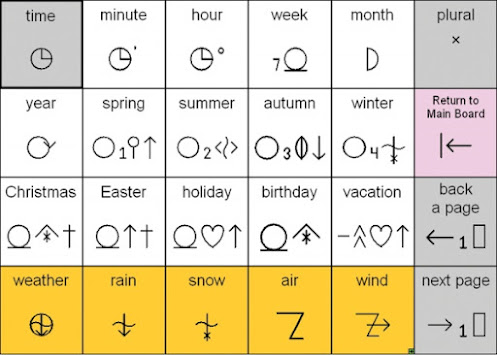Blissymbolics is a semantic, graphical language (also known as Semantography) composed of symbols that represent concepts, which can be combined to create new symbols and express ideas, particularly useful for individuals with severe speech and physical impairments.
History of Blissymbols
Blissymbolics was created by Charles K. Bliss (1897-1985). It is first applied in 1971 when Shirley McNaughton and a clinical team working with children with cerebral palsy introduced Blissymbols as a communication method for non-speaking students.
Blissymbolics was created by Charles K. Bliss (1897-1985). It is first applied in 1971 when Shirley McNaughton and a clinical team working with children with cerebral palsy introduced Blissymbols as a communication method for non-speaking students.
How Blissymbols Work:
Bliss-characters:
The system uses a core set of symbols (Bliss-characters) that represent basic concepts.
Bliss-words:These symbols can be combined to form Bliss-words, which represent more complex concepts.
Indicators:Indicators can be added to Bliss-words to express grammatical functions, such as verbs, adjectives, and adverbs.
Symbol Combinations:Symbols can be combined to represent additional concepts, and their order and position can affect their meaning.
Examples:The symbol for "house" and "money" can be combined to represent "bank".
The symbol for "mouth" can be superimposed on "nose" to represent "taste".
A horizontal dash at the baseline represents "ground", but slightly higher, it represents "sky".
Blissymbols is a practical way to teach the children to express themselves in their mother tongue, since the Blissymbols provided visual keys to understand the meaning of the English words, especially the abstract words.
The system uses a core set of symbols (Bliss-characters) that represent basic concepts.
Blissymbols is a practical way to teach the children to express themselves in their mother tongue, since the Blissymbols provided visual keys to understand the meaning of the English words, especially the abstract words.
Below is a link of a website named Bliss Online if you want to start you journey in learning Blyssymbolics.







No comments:
Post a Comment